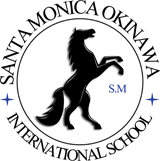Kindergarten studying materials consist of McGraw-Hill/Pearson educational materials based on CCSS and are taught by qualified teachers. Kindergarten has two teachers assisting each other inside the classroom. The classes consist of 25 students per class. SMIS curriculum entails the following subjects and their focus:
Math
Students will develop sound arithmetic skills that will enable them to apply mathematics in other areas such as science, geography, or music. Topics range from basic operations such as addition, subtraction, as well as number hierarchies. Soroban (Abacus) is also taught to further strengthen the mind’s own calculation ability.
Language Arts (English)
Language is a significant aspect of our total curriculum, as it helps to provide clarity in the student’s mind, enabling better understanding and ability in its effective usage. Students will understand that writing is the graphic form of spoken language and develop the mechanics of writing, spelling, grammar, vocabulary, punctuation, capitalization, handwriting, penmanship, phonics, fluency, and reading comprehension.
Science
The Common Core State Standard education instills in each student the understanding of the connection between all things, themselves included, in the universe. Understanding the history of the universe with a focus on humankind’s role in the evolving story that brings us to today is very important. Other topics of science will include matter and astronomy, botany, zoology, biology, and health sciences.
Social Studies
Government, sociology and culture are topics covered in the social studies.
Geography
Both the physical geology and cultural aspects of geography are covered in these courses. Students will discover the formation of the earth, its place in the solar system, its atmosphere, weather, various land and water resources, and seasons. All of these features will be represented by maps. Continents, countries and their capital cities around the world are associated with the cultural portion of geography.
History
History is taught utilizing a classical, chronological teaching method, encompassing the development of the solar system up to ancient early civilizations and recorded history. Students learn how the ancient civilizations evolved along with the common needs of people and how they applied in each time period. Children are enabled to follow this long journey of mankind and see the hard labor which accomplished all that is enjoyed in modern times.
Physical Education
Learning activities and sports that can be enjoyed into adulthood while also advocating the concept of healthy sportsmanship are integrated in Physical Education (P.E.). Such classes will combine physical and mental energies and promote both moral and social awareness. Ventures may include: Karate, Zumba, and Ballet.
Art
The art curriculum focuses on the appreciation of art, as an expression of the human spirit and condition, and the history of art, and encourages the student to express themselves creatively. The elements of art and the principles of design such as color, proportion, lines, shapes, light and shades, and perspective are examined. Visual culture and careers of art are introduced and children are encouraged to explore their creativity as a means of expression.
Music
Music history and appreciation are a part of the musical course, with lessons that encourage students to analyze music and focus on the feelings associated with it. Subjects include music theory, eurhythmics (ear and physical movement training to rhythm), sound production, and singing. Children will understand scales and the expression of music in other cultures.
Homeroom Guidance and Advanced Practical Living
Students will develop a sense of respect for others and the environment.
Foreign Language
For this course, students will study the Japanese language and culture. Kindergarten will be given two Japanese lessons a week.
Computer Skills
Children will develop skills in keyboarding, and word processing.
